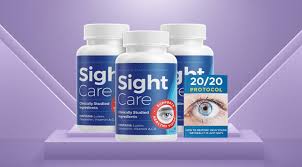Sight is one of the most precious senses, allowing us to navigate the Sight Care review world with ease and experience its beauty in vivid detail. However, many of us take our vision for granted until we encounter problems. Sight care encompasses a range of practices and measures aimed at preserving and enhancing visual health. In this article, we’ll delve into the significance of sight care, explore common eye conditions, and discuss preventive measures and treatment options.
The Importance of Sight Care:
Vision plays a fundamental role in our daily lives, influencing everything from our work and leisure activities to our interactions with others. Proper sight care is essential for maintaining optimal eye health and preventing vision loss. Regular eye exams are crucial for detecting any underlying issues early on, allowing for timely intervention and treatment.
Common Eye Conditions:
Several eye conditions can affect people of all ages, from infants to the elderly. These conditions may range from mild to severe and can significantly impact visual acuity and overall quality of life. Some of the most common eye conditions include:
- Refractive Errors: Refractive errors such as nearsightedness (myopia), farsightedness (hyperopia), and astigmatism occur when the shape of the eye prevents light from focusing directly on the retina. Corrective lenses, such as glasses or contact lenses, can effectively address refractive errors.
- Cataracts: Cataracts refer to the clouding of the eye’s natural lens, leading to blurred vision, glare, and decreased color perception. While cataracts are more common in older adults, they can also occur in younger individuals due to various factors such as genetics, injury, or prolonged UV exposure. Surgical removal of the cataract and replacement with an artificial lens is the standard treatment for cataracts.
- Glaucoma: Glaucoma is a group of eye conditions characterized by damage to the optic nerve, often caused by elevated intraocular pressure. If left untreated, glaucoma can lead to irreversible vision loss and blindness. Treatment typically involves the use of eye drops, laser therapy, or surgery to lower intraocular pressure and preserve vision.
- Age-Related Macular Degeneration (AMD): AMD is a progressive condition that affects the macula, the central part of the retina responsible for sharp, central vision. As its name suggests, AMD primarily affects older adults and can lead to significant visual impairment. While there is no cure for AMD, early detection and management can help slow its progression and preserve remaining vision.
Preventive Measures and Treatment Options:
In addition to regular eye exams, several preventive measures can help maintain good eye health:
- Protecting the eyes from harmful UV rays by wearing sunglasses outdoors.
- Maintaining a healthy lifestyle, including a balanced diet rich in fruits and vegetables, regular exercise, and avoiding smoking.
- Practicing good eye hygiene, such as avoiding eye strain from excessive screen time and taking regular breaks during prolonged periods of close work.
- Being mindful of any changes in vision and seeking prompt medical attention if necessary.
When it comes to treatment, the approach varies depending on the underlying condition. In many cases, early intervention can help prevent further deterioration of vision and preserve existing visual function. Treatment options may include prescription eyewear, medication, laser therapy, or surgical procedures, depending on the specific needs of the individual.
Conclusion:
Sight care is essential for maintaining optimal eye health and preserving vision throughout life. By prioritizing regular eye exams, adopting preventive measures, and seeking timely treatment when needed, individuals can safeguard their vision and enjoy a lifetime of clear sight. Remember, healthy eyes contribute to a better quality of life, so make sight care a priority today.
